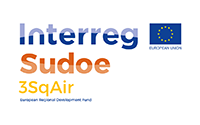
Source apportionment of children daily exposure to particulate matter
Description
The present study aims to investigate the sources of particulate pollution in indoor and outdoor environments, with focus on determining their contribution to the exposure of children to airborne particulate matter (PM). To this end, parallel indoor and outdoor measurements were carried out for a selection of 40 homes and 5 schools between September 2017 and October 2018. PM2.5 and PM2.5–10 samples were collected during five days in each microenvironment (ME) and analysed by X-Ray Fluorescence (XRF), for the determination of elements, and by a thermal-optical technique, for the measurement of organic and elemental carbon. The source apportionment analysis of the PM composition data, by means of the receptor model SoFi (Source Finder) 8 Pro, resulted in the identification of nine sources: exhaust and non-exhaust emissions from traffic, secondary particles, heavy oil combustion, industry, sea salt, soil, city dust, and an indoor source characterized by high levels of organic carbon. Integrated daily exposure to PM2.5 was on average 21 μg/m3. The organic matter, resulting from cleaning, cooking, smoking and biological material, was the major source contributing by 31% to the PM2.5 exposure. The source city dust, which was highly influenced by the resuspension of dust in classrooms, was the second main source (26%), followed by traffic (24%). The major sources affecting the integrated exposure to PM10, which was on average 33 μg/m3, were the city dust (39%), indoor organics (24%) and traffic (16%). This study provides important information for the design of measures to reduce the exposure of children to PM.
Summary:
Characteristics:
Date: August 2022
Author : Susana Marta Almeida, Tiago Faria, Vânia Martins, Nuno Canha, Evangelia Diapouli , Konstantinos Eleftheriadis, Manousos Ioannis Manousakas
Geographical area: Portugal, Lisbon
Type of publication : Article
Language : EN
